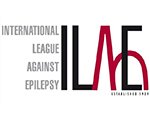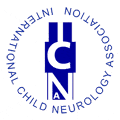Tuberous Sclerosis
Description
Tuberous sclerosis is a rare genetic condition characterized by the growth of benign tumours in different parts of the body. The condition may be diagnosed during infancy or childhood. With appropriate care patients can lead productive and fulfilling lives.
Anatomy
The benign tumours occur most commonly in the brain, heart, lungs, kidneys, eyes, and skin.
Causes
Tuberous sclerosis occurs due to a genetic mutation which causes uncontrolled growth of some cells of the body. In about one third of the patients, the genetic mutation is inherited. In other cases, the mutation occurs spontaneously.
Symptoms
- Brain: Benign tumours on the brain can cause seizures, developmental delays, behavioural problems, and hydrocephalous.
- Heart: Benign tumours on the heart can cause irregular heart rhythms and heart failure. However, most heart tumours shrink as the child gets older.
- Lungs: Benign tumours of the lungs can cause breathing difficulties and damage the lung tissue.
- Kidneys: Benign tumours of the kidneys can cause kidney failure, blood in the urine, and high blood pressure.
- Eyes: Benign tumours may grow on the retina, but are rarely large enough to affect vision.
- Skin: Changes in the skin may include light coloured patches, thickened areas, acne-like lesions, skin growths under or around the nails.
Diagnosis
Your child's doctor will discuss your family medical history to determine if the condition is inherited and conduct a physical examination looking for characteristic signs on the skin, eyes and other parts of the body. Diagnostic tests include:
- Genetic blood test to identify genetic abnormalities
- Magnetic resonance imaging to identify tumours in the kidneys and brain
- Ultrasonography or other imaging modalities to identify tumours in the heart, lungs, and kidneys
- EEG to detect abnormal brain activity
- ECG to detect abnormal heart activity.
Consequences if Untreated
If left untreated, some of the more serious complications of tuberous sclerosis such as hydrocephalous can lead to progressive brain damage.
Treatment Options
Treatment depends on the severity of the condition and the manifestation of the disease. These include:
- Medications to control seizures and behavioural problems as well as to treat brain, kidney and skin lesions. Newer medications are available which can regulate the growth of benign tumours in different organs. The neurologist will determine if your child is suitable candidate for these newer medications.
- Educational therapy to help children cope with developmental delays and overcome learning disabilities
- Occupational therapy to help children perform activities of daily living
- Psychological therapy to help children maintain a positive attitude in dealing with their condition
- Surgical removal of lesions that may be impairing normal organ function.








